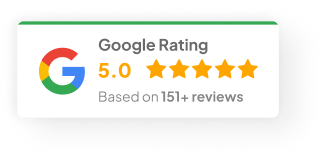09 Sep 25
Online Marketing and Web Design Tips You Should Know to Grow Your E-commerce Brand
Selling online isn’t just “list products, wait for sales.” Shoppers expect more. They judge a site within seconds—how fast it loads, how simple checkout feels, whether the brand even looks credible. If any of that’s off, they’re gone.
eCommerce is set to hit $6.3 trillion in sales this year. Huge potential, but also brutal competition. The stores that win are the ones that get their marketing and web design working together. Not one or the other. Both.
Why Marketing and Design Can’t Be Separated
Marketing gets people in the door. SEO, ads, emails, content, social—you name it.
Design keeps them inside long enough to buy. Layout, navigation, images, checkout flow.
Run great ads with a bad site? Money wasted. Build a gorgeous site no one finds? Same problem. Growth comes when traffic meets usability.
7 Online Marketing and Web Design Tips
1) Make Mobile the Priority
Mobile shopping isn’t “growing.” It already dominates. By 2027, 62% of all eCommerce sales will be on phones. Ignore mobile users and sales go straight to competitors.
A good mobile site means:
- Pages that load in under three seconds
- Menus and buttons easy for thumbs
- Clean, uncluttered design
- Checkout that doesn’t feel like a chore
One bad mobile experience is enough to push customers to another brand.
2) Speed = Sales
People don’t wait online. Google says 53% of mobile users leave if a site takes more than three seconds to load. That’s over half of potential customers bouncing instantly.
To keep the site fast:
- Compress images before uploading
- Use a CDN
- Trim unnecessary plugins
- Invest in solid hosting
Shave seconds off load time and conversion rates almost always rise.
3) Design With Conversions in Mind
Think of the site like a physical store. If it’s cramped, cluttered, hard to find the checkout, you’d leave, right? Same online.
Conversion-focused design isn’t about being flashy. It’s about guiding visitors:
- Plenty of white space so it doesn’t feel busy
- Clear product images (no grainy photos)
- Fonts and colors that match across pages
- Strong, obvious call-to-action buttons
Trust builds through clarity and consistency. Trust drives sales.
4) Content That Actually Helps
Content isn’t just “something to post.” It builds authority and keeps traffic flowing. Brands that blog get 97% more inbound links than those that don’t. More links = better search rankings.
What works for eCommerce:
- How-to guides using your products
- Short demo videos
- Blog posts that answer real customer questions
- Testimonials or customer spotlights
The best content educates, shows credibility, and moves people closer to buying.
5) Social Proof Is Everything
Shoppers want proof before pulling the trigger. Roughly 93% of consumers say reviews influence what they buy.
Easy ways to show it:
- Product reviews and ratings
- User-generated content—photos, videos
- Trust badges like “secure checkout” or “free returns”
Small details, but they give buyers the confidence they need.
6) Email Still Works
Email isn’t dead. Far from it. For every $1 spent, brands see an average $36 return. And automation makes it easier than ever.
Set up:
- A welcome series for new subscribers
- Abandoned cart reminders
- Personalized product suggestions
- Post-purchase thank-you notes
Once running, these flows keep customers engaged without extra daily work.
7) Use Analytics to Find the Leaks
Growth isn’t a guessing game. Tools like Google Analytics 4 show where traffic comes from, how users behave, where they drop off.
For example, if cart abandonment is high, the checkout might be the problem. Fixes could be:
- Offer guest checkout
- Simplify the form
- Add free shipping thresholds
Small tweaks based on real data can have a big impact on sales.
When to Bring in an Agency
Starting out with Shopify or WooCommerce is doable. Scaling is different. At some point, an agency saves time, avoids mistakes, and makes sure design and marketing push toward conversions, not just “nice visuals.”
Things to check before hiring:
- Solid eCommerce track record
- A focus on conversion-first design
- Ability to go beyond templates
- Support after launch
- Happy past clients
Why Chromatix
Chromatix has spent over a decade building eCommerce sites designed for conversions. Not just design for design’s sake, but experiences built to move customers through the journey.
For brands that don’t want to waste months experimenting, a conversion-driven agency like Chromatix can speed things up and get results sooner.
Conclusion
Marketing pulls people in. Design keeps them engaged. Together, they create the foundation for lasting eCommerce growth.
If it feels like too much to handle alone, it might be the right time to lean on professionals who do this every day.
So, what’s tripping you up most right now—getting traffic, or getting those visitors to actually buy?


